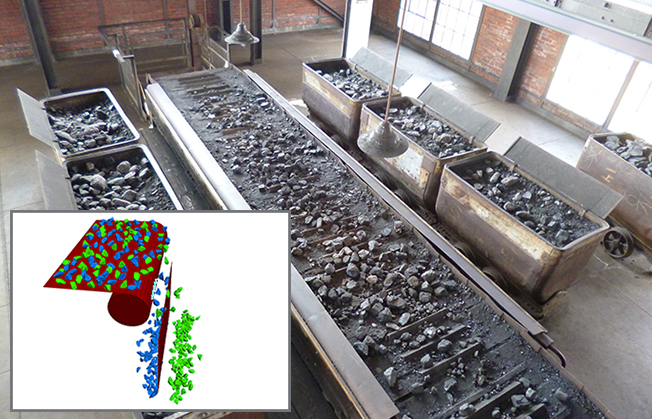To be competitive, industrial companies improve process efficiency and optimize designs using numerical simulation, in addition to experimentation, to gain detailed understanding of each control parameter.
For over 20 years, Itasca has provided software and services for the pharmaceutical, chemical, materials processing, mining, oil and gas, and agricultural engineering industries. Primarily using Particle Flow Code (PFC), Itasca has worked on materials handling and processing projects that include:
- Granular packing and vibrational compaction
- Mechanical strength of porous materials
- Mechanical characterization and segmentation process of fibrous materials from 3D tomographic images
- Limiting segregation phenomena when mixing, filling, and discharging a container
- Agglomeration of a powder
- Rock mass response to chemically induced pressure pulses
- Flow optimization in mine ore passes
- Ore recovery and dilution in cave mining leading to the development of REBOP
- Optimization performance of mixers and conveyor systems
- Process research (static and dynamic) aimed at achieving maximum compactness of recycling products (e.g., bauxite powder)
- Management of sorting and segregation of materials in a production line
- Representation and mechanical characterization of a fibrous structure from 3D tomographic images
- Modeling fragmentation of grains/blocks under large deformations
Although PFC is developed as a general Distinct Element (DEM) framework, many of its components facilitate material handling and processing analysis:
- Variety of boundary conditions (walls, conveyor-walls, periodic space, etc.)
- Variety of shapes (spheres, clumps, and convex rigid blocks)
- Incremental multiphysics (buoyancy, molecular dynamics, electromagnetism) via FISH and Python scripting and user-defined contact models (C++)
- Built-in ability to couple to FLAC3D and 3DEC
- Sockets to couple with third-party software such as ANSYS and Leapfrog
These capabilities have permitted engineers and researchers to conduct equipment prototyping, to analyze material mixing and segregation, and to simulate: agricultural processing, composite materials, mine orepass flow, cave mining recovery and dilution, pipe wear, and tool-soil/rock interaction (drilling, rock-cutting, soil-ploughing), amongst other applications.

